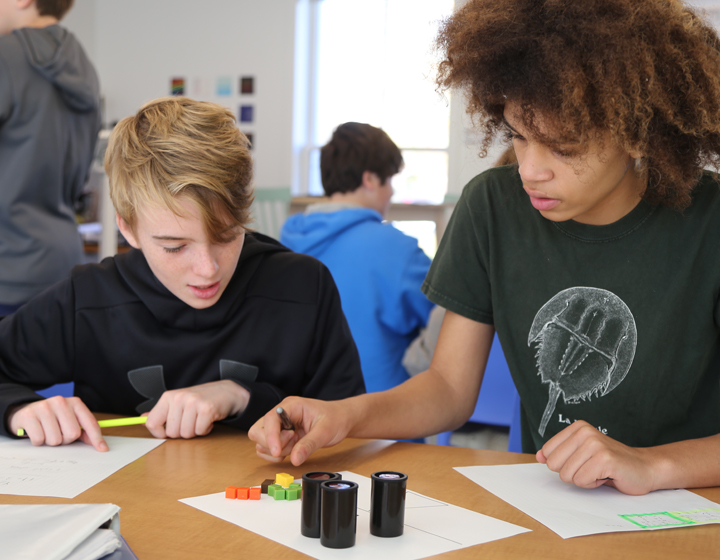
Written by Associate Head of School Elizabeth Clayton
When most adults were in elementary school, we learned to perform mathematical procedures or follow a prescribed set of rules as a way of finding answers to problems. Long division is a great example of this – divide, multiply, subtract, bring down – who cared why. We just followed the rules. Thankfully, there is much more to mathematics than lists of steps to follow, and there is a significant difference between having conceptual knowledge and procedural knowledge of any given topic. At CRS, our math program is designed to help children develop a strong conceptual understanding of math concepts before introducing the procedures, or algorithms, that go along with each. There are many reasons for this approach to learning math: students are less likely to forget concepts than procedures, true conceptual understanding results in the ability to solve problems in many different ways, and when students understand the underlying concept, they can apply that knowledge to new and non-routine situations.
While it is eventually necessary to be able to follow a recipe to quickly answer a math problem, this is not the true essence of mathematics. Our philosophy of teaching mathematics is based on discovery and problem-solving. Beginning in the early grades, students engage in tactile activities designed to stimulate their curiosity and build a very personal understanding of concepts. Far from the spoon-fed teacher dictation of algorithms, our students are building their own web of mathematical knowledge. In later grades, the material becomes more abstract, but the thinking behind the ideas remains a central focus. Building understanding in this manner takes time, and it is time well spent. The concrete work with manipulatives and breaking down concepts that happen through fifth grade and even into the middle school years results in mathematically flexible students who can solve problems in many different ways. Great mathematicians are not known for memorizing times tables at an early age or for being able to follow a given set of rules; they are known for their ability to approach complex problems from various angles and apply conceptual knowledge to new situations.
With every mathematical topic, the goals are to build conceptual understanding, master specific knowledge or skills, and experience meaningful applications. We use many wonderful math materials to serve as models or tools to build understanding. In our conceptually oriented classrooms, much time is spent helping the students build insight through activities and games. Once children have considerable experience with an activity using concrete models, teachers lead them to connect this to a written format. Not only is this method of teaching math more interesting, but it is also more effective. In studies conducted for the Journal for Research in Mathematics Education, students in conceptually focused classrooms reflected more positive attitudes towards mathematics and they outperformed students in more procedurally driven programs on tests like the National Assessment of Educational Progress. In the long run, a deep understanding of a concept and the flexibility to connect that knowledge to new situations is most important in developing successful mathematicians.
